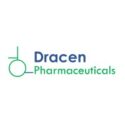
20 May Glutamine Antagonist Sirpiglenastat (DRP-104) Has Therapeutic Potential in Targeting Lung Cancer, SCCHN, and Prostate Cancer
MedicalResearch.com Interview with:

Dr. Wild
Robert Wild, Ph.D
Chief Scientific Officer
Dracen Pharmaceuticals
MedicalResearch.com: What is the background for the development of sirpiglenastat, i.e., would you briefly explain what is meant by glutamine antagonist?
Response: Cancer cells consume and use glutamine for both energy generation and as a source of carbon and nitrogen for biomass accumulation. Many oncogenes and tumor suppressor genes drive large-scale metabolic reprogramming of tumors into glutamine addiction. These highly proliferating tumors create a hostile and immunosuppressive tumor microenvironment (TME), which is nutrient- depleted, acidic and hypoxic in nature.
Sirpiglenastat (DRP-104), is a novel broad-acting glutamine antagonist that inhibits all 10 known glutamine metabolism enzymes. DRP-104 was designed to preferentially inhibit glutamine metabolism in tumors and associated TME and not in normal tissues, providing a large therapeutic window.
DRP-104 demonstrates powerful direct apoptotic (cell death) properties and immune modulatory mechanisms through broad remodeling of the TME to infer DRP-104 impacts immune-metabolism.
Inhibition of glutamine metabolism leads to:
- Induction of apoptosis in glutamine-addicted tumor cells leading to substantial single-agent activity and tumor regressions
- Rebalance of the TME that enhances immune cell infiltration and function
- Differentiation and modulation of adaptive and innate immune cells toward a highly proliferative, activated and long-lived phenotype for a long-term durable response.
MedicalResearch.com: How does sirpiglenastat differ from similar agents?
Response: To the best of our knowledge, DRP-104 is the only broad glutamine antagonist in development.
DRP-104 is a covalent (irreversible) inhibitor of all 10 glutamine-metabolizing enzymes. The compound preferentially inhibits glutamine metabolism in tumors and the TME.
Other studied agents in this pathway include glutaminase-1 selective inhibitors (GLS1 selective inhibitors), such as telaglenastat (CB-839, Calithera) and IACS-6274, that only inhibit one out of 10 enzymes involved in glutamine metabolism as opposed to DRP-104, which is a broad, potent and irreversible inhibitor of all 10 glutamine metabolizing enzymes. In preclinical models, DRP-104 was more efficacious than GLS1 selective inhibitors.
MedicalResearch.com: What are the results of the studies to date?
Response: DRP-104 broadly antagonizes glutamine in the tumor inducing potent anti-tumor responses via both direct activity and immuno-oncology mechanisms.
DRP-104 has demonstrated activity in multiple preclinical models both as a single agent and in combination with various immune checkpoint inhibitors (e.g., anti-PD-1, anti-PD-L1, anti-CTLA4 and anti-TIGIT) in genetically selected, glutamine-addicted patient populations. Plasma stability has been confirmed in preclinical species with preferential tumor delivery demonstrated in mice and companion dogs.
 Dracen has successfully developed IV and subcutaneous suspension formulations with long-term stability and has explored and characterized DRP-104 dosing schedules preclinically to optimize the therapeutic window.
Dracen has successfully developed IV and subcutaneous suspension formulations with long-term stability and has explored and characterized DRP-104 dosing schedules preclinically to optimize the therapeutic window.
Preclinical in vivo efficacy studies have demonstrated plasma and tumor biomarkers correlated to target engagement, tumor microenvironment changes and IO effects (e.g., T-cell, NK cell, macrophage stimulation). These biomarkers will be analyzed in clinical studies for indicators of biological activity.
Multiple paths to FDA approval include DRP-104’s efficacy in high unmet medical need tumors with mutations in KEAP1/NFE2L2, STK11, KRAS, PTEN, and EGFR, which lead to tumor glutamine dependence and poor outcomes of standard-of-care drugs in multiple indications including non-small cell lung cancer (NSCLC), squamous cell carcinoma of the head and neck (SCCHN), and prostate cancer.
MedicalResearch.com: What are the results of the studies to date?
Response: Dracen’s comprehensive preclinical program has significantly de-risked DRP-104.
- Successful delivery methods include IV and subcutaneous suspension formulations with long-term stability.
- Early clinical experience demonstrates no dose-limiting toxicities at dose levels/exposures associated with efficacy in preclinical models demonstrating large therapeutic window.
- Preclinical in vivo efficacy studies identified plasma and tumor biomarkers correlated to target engagement, tumor microenvironment changes and IO effects (T-cell, NK cell and macrophage stimulation, for example).
The identification of multiple additional development paths in glutamine-addicted tumors suggests the ability to tailor DRP-104 based on patient genetics and characteristics.
MedicalResearch.com: What research is currently underway?
Response: A seamless Phase 1/2a clinical development program is ongoing. Dracen is currently completing the dose escalation phase. The completion of this ongoing phase of the study will trigger the start of phase 1b/2a development.
MedicalResearch.com: What should readers take away from your report? Is there anything else you would like to add?
Response: Dracen has focused and experienced leadership. The Sirpiglenastat (DRP-104) Glutamine Antagonism Program has advanced from early lead molecule to Phase 1 completion in less than four years.
DRP-104 has significant promise with multiple paths to registration including potential for accelerated approval as a single agent and in combination with various immune modulating therapies. DRP-104 is an ideal combination partner for complimentary immunotherapy approaches because:
- Offers a well-tolerated therapy without toxicity burden
- Creates a favorable tumor environment and stimulates innate and adaptive immune cells
- Does not cause myelosuppression
- Brings its own efficacy to combination therapy
There is an opportunity to create multiple offerings in tumors with unmet medical need including prostate, NSCLC and SCCHN.
Other pipeline initiatives include Dracen’s NRF2 discovery program to provide potential future first-in-class small-molecule therapy in areas of high unmet need.
Citation:
Data presented at the Festival of Biologics World Immunotherapy Congress and World Antibody Congress
March 9 – 11, 2022 in San Diego, California.
https://www.terrapinn.com/conference/festival-of-biologics-usa/index.stm
[wysija_form id=”3″]
[last-modified]
The information on MedicalResearch.com is provided for educational purposes only, and is in no way intended to diagnose, cure, or treat any medical or other condition. Always seek the advice of your physician or other qualified health and ask your doctor any questions you may have regarding a medical condition. Some links may be sponsored and no links are warranted or endorsed by MedicalResearch.com or its parent company, Eminent Domains Inc. In addition to all other limitations and disclaimers in this agreement, service provider and its third party providers disclaim any liability or loss in connection with the content provided on this website.
Last Updated on May 20, 2022 by Marie Benz MD FAAD
